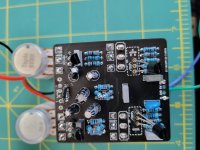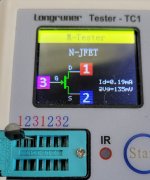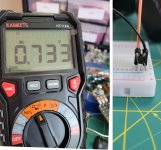Is there anything immediately outstanding as to why I'm not getting anything when active? The only thing I thought was maybe a pot and switch touching, but I put a piece of electrical tape in to stop them.
Sound in bypass, but nothing when engaged. I'll post a pic of the top in the reply as it's telling me too large to post both on this.
Any advice would be much appreciated.
Thank you,
Sound in bypass, but nothing when engaged. I'll post a pic of the top in the reply as it's telling me too large to post both on this.
Any advice would be much appreciated.
Thank you,







